After Olsztyn and Elbląg, Ełk, picturesquely situated on Jezioro Ełckie lake, is the third largest city in Warmia-Masuria. The town has become an important regional center and can call numerous historical buildings its own. The most famous son of the town was the German writer Siegfried Lenz, who saw the light of day here in 1926 and thematized his Mazurian homeland in many of his works. In the following article we will take you on a trip to the southeast of Masuria and introduce you to the most beautiful Ełk sights.
Originally, the pagan Sudovians settled here before being subjugated by the Teutonic Order at the end of the 13th century. Ełk or Lyck, as it was called in German, had its heyday in the 16th century, when an important trade route from Königsberg (Kaliningrad) to Vilnius passed through the town and the printing trade made the town an important intellectual center.
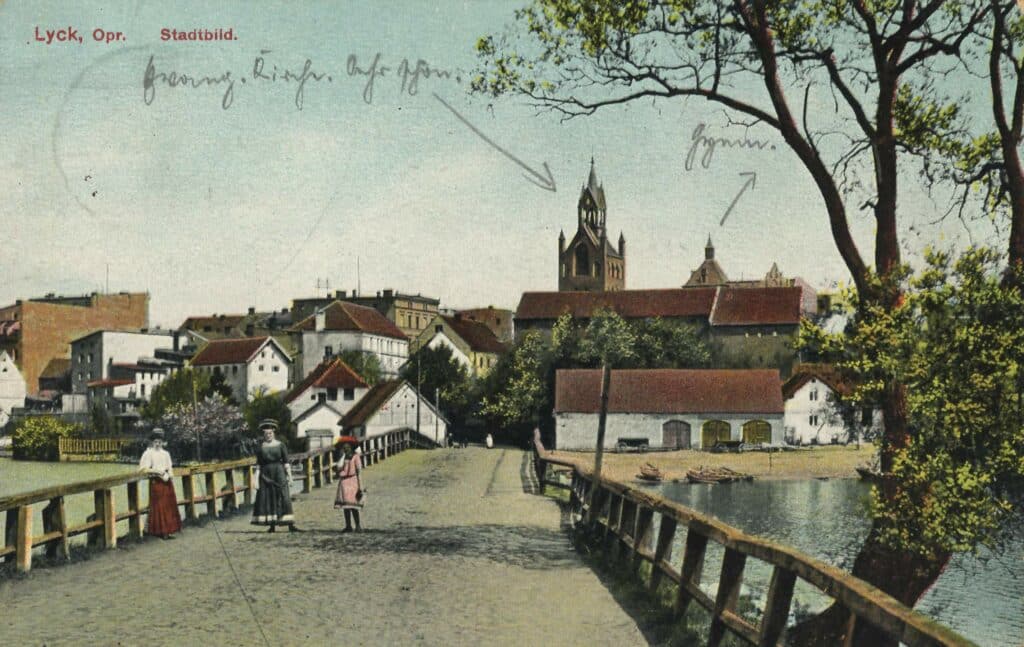
After the Second World War, many industrial companies settled here. In the meantime, however, Ełk is taking advantage of its picturesque location and develops more and more into a vacation resort. The industrial companies ensured that the population literally exploded after the war. While around 16,000 people lived here in 1939, today there are over 60,000.
But enough of the preface, you are probably already curious about what there is to see and experience in Ełk, so here we go and present the most beautiful Ełk sights!
Ełk old town
In the extensive old town of Ełk, orientation is not so easy. Here it is hard to overlook the fact that many buildings were lost during the Second World War, gaps between buildings were filled by relatively unimaginative constructions. Nevertheless, the town has a historically developed structure and the preservation of the Art Nouveau and Classicist buildings is very important to the local government. The best thing to do is to drift through streets like ul. Mickiewicza to take in the special architectural mix of young and old.

Adalbert Cathedral (Katedra św. Wojciecha)
The three-nave Adalbert Cathedral, together with St. Mary’s Church in Gołdap, is the most important place of worship in eastern Masuria and the seat of the bishop of the Ełk diocese, whose territory extends into the Belarusian-Lithuanian borderland. The neo-Gothic church was built in the 1880s and still has some Gothic interior decoration from older places of worship. Miraculously, the church was not destroyed during the Second World War. South of the church you will come to a huge street art painting depicting Pope John Paul II.
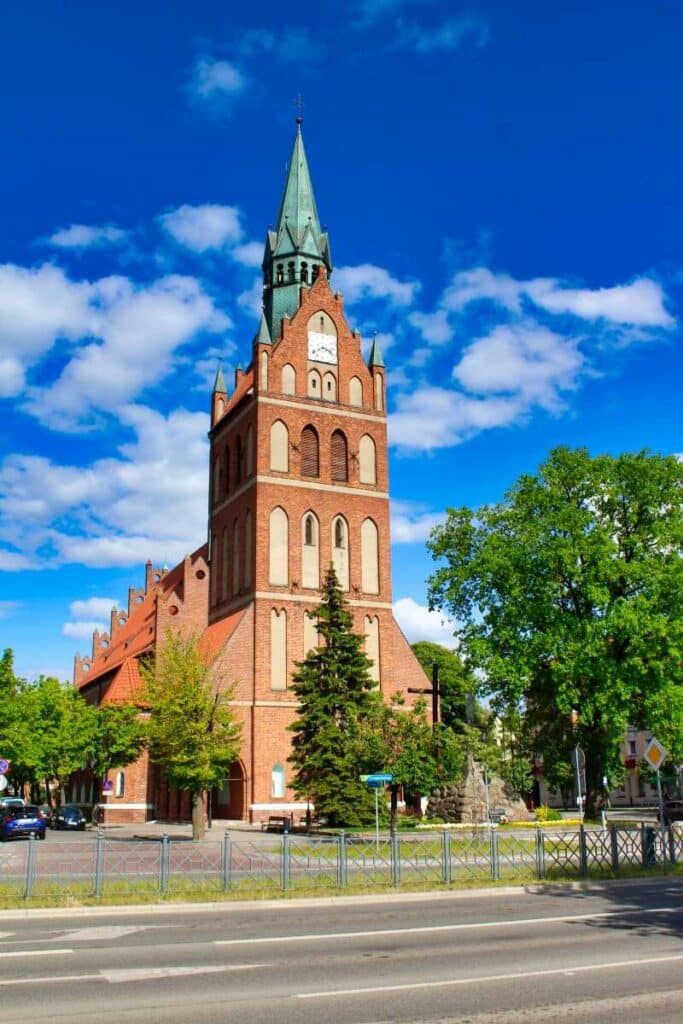
Sacred Heart Church (Kościół Najświętszego Serca Pana Jezusa)
In the 19th century, a large church was built in the middle of the city by a student of the famous Prussian architect Schinkel, which served as a place of worship for the Protestant community. After it was destroyed by Russian troops during World War I, a new church was built between 1922 and 1925, using older structural elements and drawing heavily on Gothic models from the region. Fortunately, the Sacred Heart Church survived the Second World War almost unscathed and was subsequently repaired by the new Catholic community.
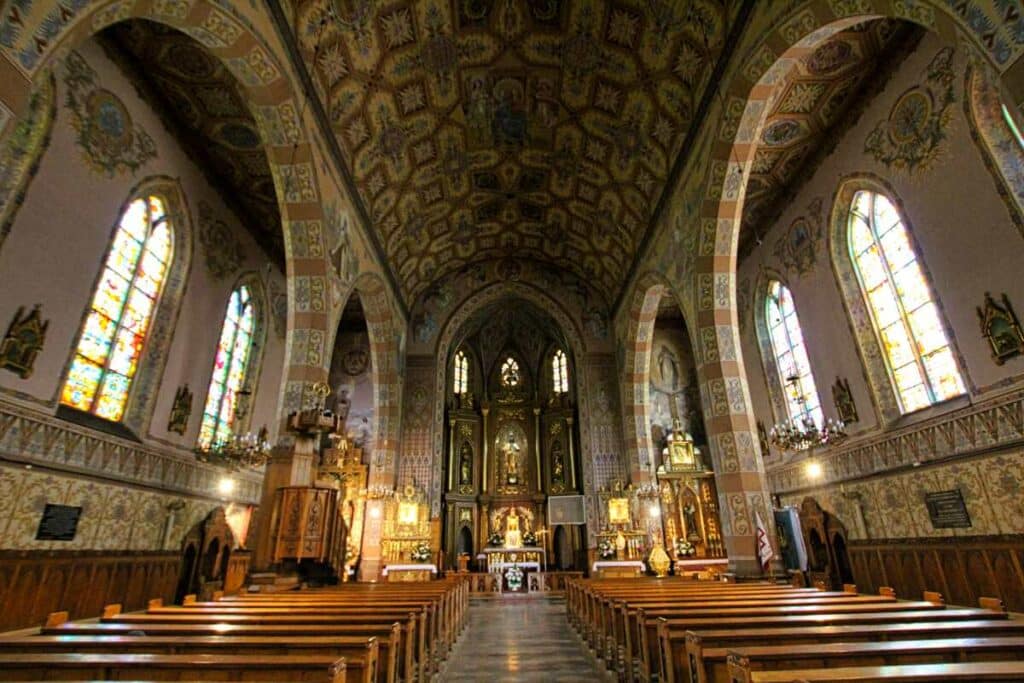
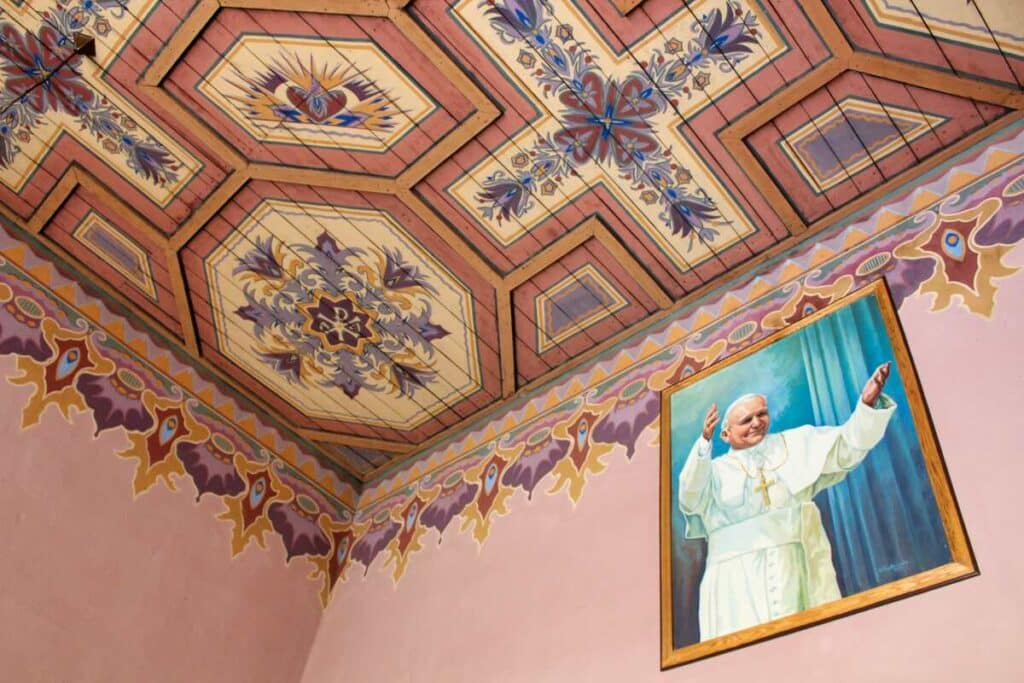
The interior is colorfully decorated, has an organ from Hanover and is covered all over with ornaments that are supposed to be reminiscent of medieval Byzantine frescoes. This may seem a bit kitschy, but it leaves a thoroughly harmonious overall impression.
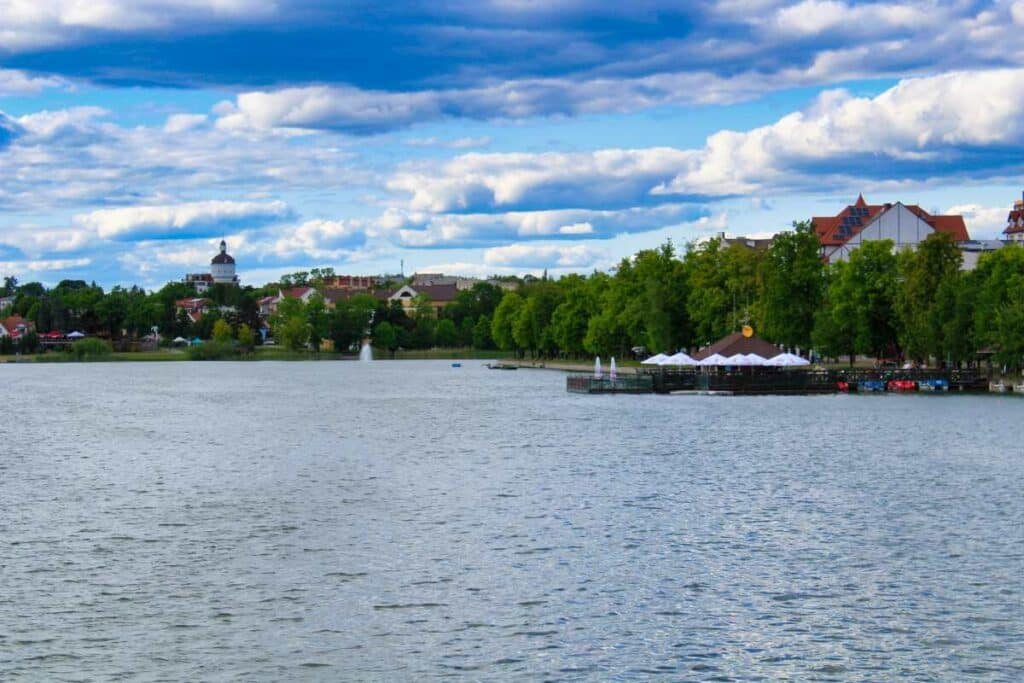
Waterfront
The waterfront promenade has been developed into a well-kept walkway in recent years and is one of the most beautiful Lyck sights. Numerous restaurants and boat rentals await customers here. A stroll is especially beautiful in the evening, when the sun seems to sink into the lake. Crossing a bridge, one continues to the former Castle of the Teutonic Knights, alternatively, you can take a walk north to the water tower.
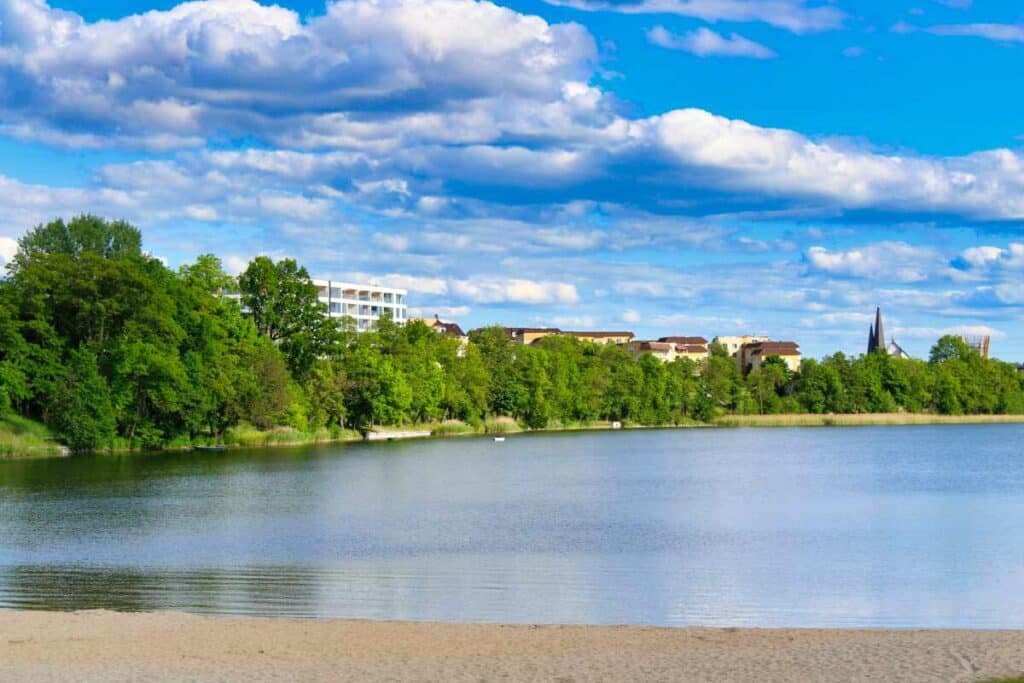
You can also just relax on the small beach and take a swim. Nearby there is also a small park where historical agricultural equipment is exhibited.
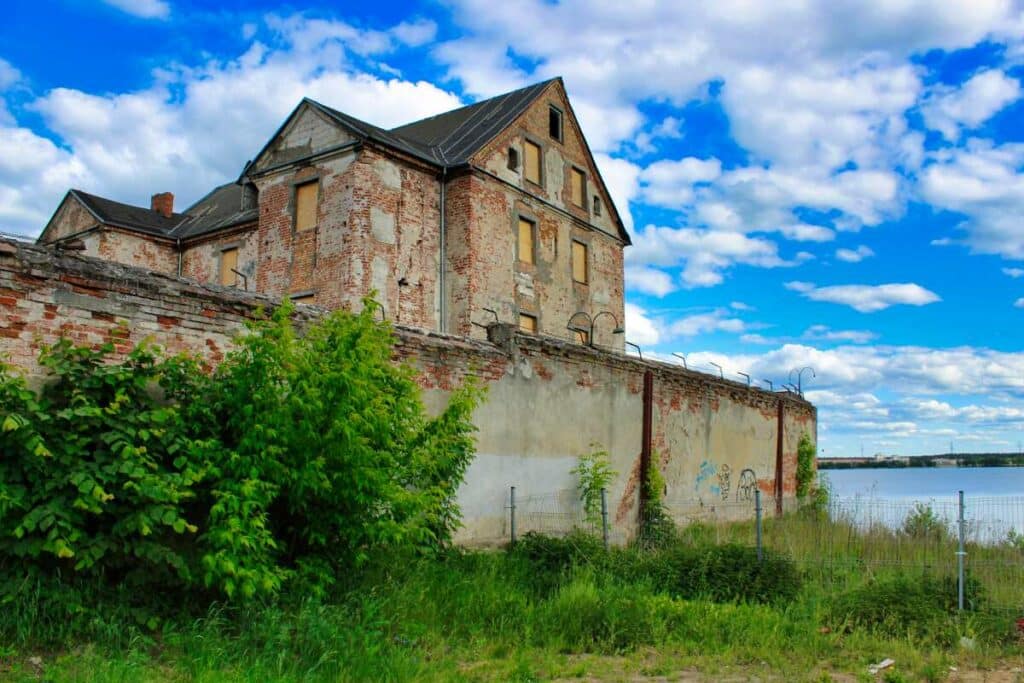
Castle of the Teutonic Knights (Zamek Krzyżacki)
At the end of the 14th c. the Teutonic Order built its easternmost castle here. A more beautiful (and defensible) place could hardly have been chosen than the island in Lake Ełk. It is connected to the shore by a bridge. The complex burned down in the middle of the 15th cent. but was rebuilt in a slightly different form. At the end of the 18th cent. the castle became increasingly dilapidated and was therefore partially demolished. It was used as a prison until the 1970s.
After that, the building stood empty for a long time, which is rather surprising considering the tourist potential of this place. In the meantime, an investor has acquired the property and is converting it into a luxury hotel, but when I last visited in June 2023, not much had happened yet, so we are still waiting until it again becomes one of the best Ełk sights.
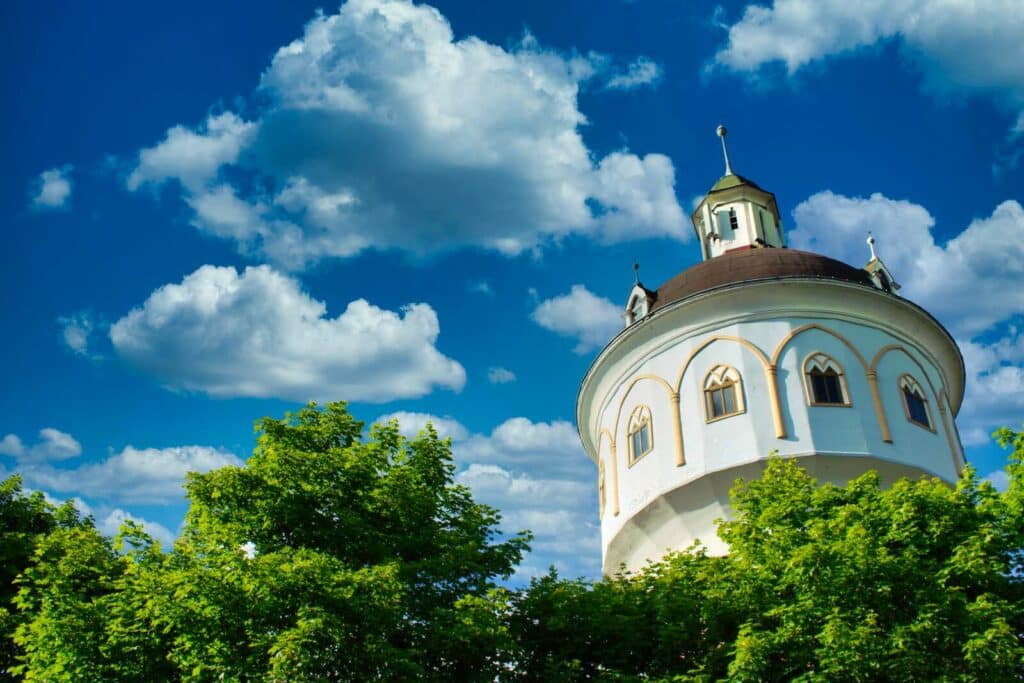
Water Tower (Wieża ciśnień)
The water tower in the north of the city center was one of the first in the region to be put into operation back in 1895 and is also one of the best preserved in the whole of Masuria. The five-story building is divided into three separate construction phases. At the time of its inauguration, the water tower was able to supply drinking water to about 20,000 residents. Today, an association of the German minority has its headquarters here. The tower also houses a small exhibition, the Museum of the Water Drop. It shows everyday objects from the life of the people of Lyck, technical equipment related to water and old photos from before the war. From the top you have a beautiful view of the city.
Lyck Historical Museum (Muzeum Historyczne w Ełku)
The town’s Historical Museum is now housed in the old narrow-gauge railroad station building (see below). On the grounds, you can not only learn a lot about the history of the city, but also marvel at some historic trains. There is also a small park where children can learn about physical phenomena in a playful way. Inside, changing exhibitions are shown. By the way, the operators of the museum around the dedicated historian Dr. Rafał Żytyniec are still looking for exhibits from the town’s history before 1945. So if you had ancestors in Lyck or the surrounding area, feel free to contact us and we will forward old family photos, postcards, memories, etc.!
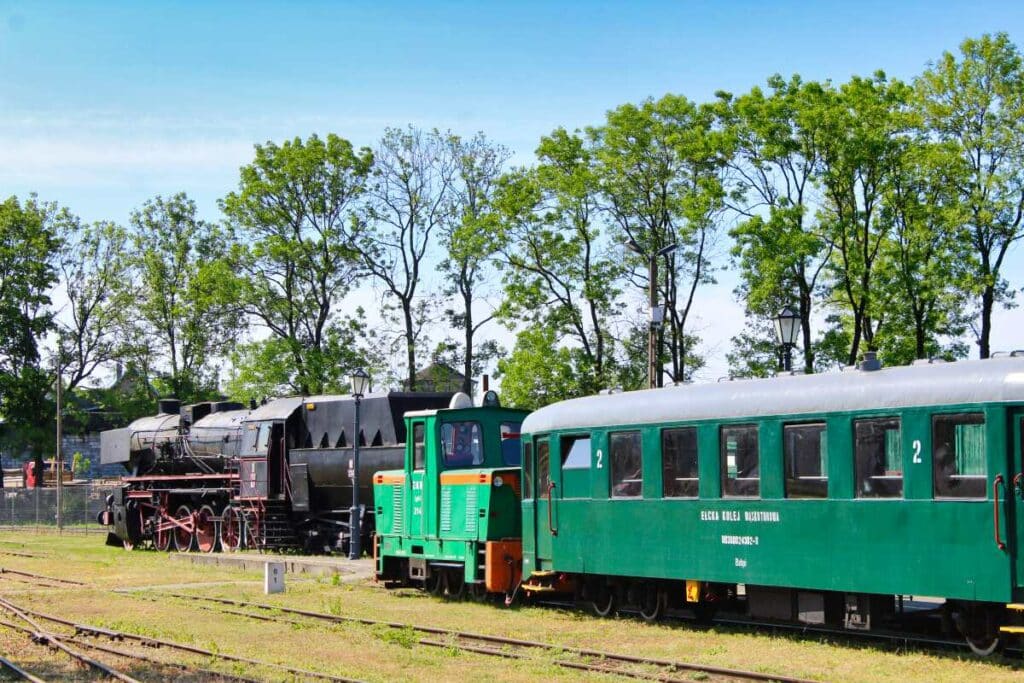
Ride with the narrow gauge railroad
The Ełk narrow-gauge railroad was put into operation during the First World War. A ride on the narrow-gauge railroad, which chugs from the station to Sypitki, almost 20 kilometers away, is a unique experience, especially for families with children. If you’re lucky, you’ll catch a historic steam locomotive, if you’re unlucky, a relatively dull diesel locomotive. When you arrive at your destination, you can enjoy Masurian specialties in a restaurant or simply bring your own grill and use the sticks to grill a sausage over an open fire. There is also a large playground! By the way, the narrow-gauge railroad inspired Lenz to write his short story “A Little Railway Named Popp”, so this is truly on of the most interesting Ełk sights!
How did you like our article about themost beautiful Ełk sights? Which place should we visit for you soon? Let us know and write us a comment!

